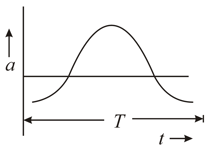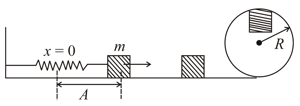Embibe Experts Solutions for Chapter: Simple Harmonic Motion, Exercise 1: Exercise-1
Embibe Experts Physics Solutions for Exercise - Embibe Experts Solutions for Chapter: Simple Harmonic Motion, Exercise 1: Exercise-1
Attempt the free practice questions on Chapter 19: Simple Harmonic Motion, Exercise 1: Exercise-1 with hints and solutions to strengthen your understanding. Beta Question Bank for Engineering: Physics solutions are prepared by Experienced Embibe Experts.
Questions from Embibe Experts Solutions for Chapter: Simple Harmonic Motion, Exercise 1: Exercise-1 with Hints & Solutions
The magnitude of average acceleration in half time period in a simple harmonic motion is
A particle performs S.H.M. with time period . The time taken by the particle to move from half the amplitude to the maximum displacement is
A particle of mass executing SHM makes oscillation per second. The difference of its kinetic energy when all the centre, and when at a distance from the centre is
Acceleration and time period of a body in S.H.M. is given by a curve shown below. Then corresponding graph between kinetic energy and time is correctly represented by

A particle is performing S.H.M. with acceleration where is coordinate of the particle w.r.t. the origin. The parameters are in S.I. units. The particle is at rest at at .
An oscillation is described by the equation where changes with time according to the law where is constant. Find the ratio of frequencies of harmonic oscillations forming oscillation
Vertical displacement of a plank with a body of mass '' on it is varying according to law . The minimum value of for which the mass just breaks off the plank and the moment it occurs first after are given by: ( is positive vertically upwards)
A block of mass is placed on a level frictionless table. The block is attached to a horizontally aligned spring fixed with its other end is vibrating in a horizontal plane with the period . Suddenly at the instant of time when the spring comes to the position of equilibrium and becomes unstretched the block disconnects from the spring and continues sliding across the frictionless surface away from the until it encounters a loop of radius . What must be the amplitude of vibrations of the blocks on the spring in order for the block to complete one loop without falling down?

